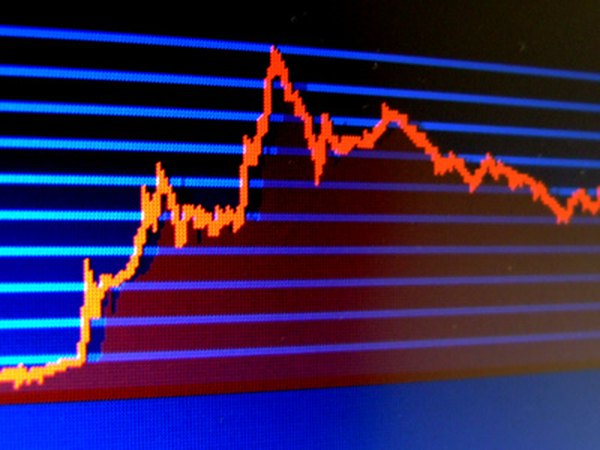How to Calculate Percentage Increase of a Stock Value
Percentage gain lets you compare results from different stock investments.
stock market analysis screenshot image by .shock from Fotolia.com
If you want to see how much a stock has gone up over time, you can often just compare the two share prices to find the dollar change over time. Often, though, you'll want to compare what your rate of return would have been if you invested a certain amount of money in one stock rather than another, in which case you'll want to use the percentage gain formula to see what you would have made on each security. Also remember to adjust price quotes to take into account stock splits and other corporate events.
Percentage Change in Stock Price
It's sometimes more useful to look at a percentage change in a stock price than to look at how much the stock changed in price purely in dollars per share. That's because you often want to know how much a particular investment in a stock would do compared to alternatives, making the relative change more useful to think about than the absolute dollar per share difference.
To compute percentage change in stock price if you don't have a digital percent gain calculator app handy, simply subtract the old price from the new price and divide the difference by the old price. Then, multiply by 100 to get the percent change. If the sign is negative, that means that the price decreased. If it's positive, the price increased over time.
If you call the old price p1 and the new price p2, you can write the formula as 100 * (p2 - p1) / p1. This formula works for all kinds of values that change over time, not just for stock prices.
A Concrete Example
Imagine that you had invested $1,000 in a stock valued at $5 per share and another $1,000 in a stock valued at $10 per share. This would give you 200 shares of the first stock and 100 shares of the second stock.
After a year, assume the first stock's value increased by $5 per share while the second's stock price increased by $8 per share. While the second stock increased by a greater price per share, it increased by a smaller percentage of the original price. The first stock went up by (10 -5 ) / 5 * 100 = 100 percent, while the second stock increased by (18 - 10) / 10 * 100 = 80 percent. If a stock goes up 100 percent, it's doubled in value.
That's also reflected in the relative increase in your two investments. Your 200 shares of the first stock each increased by $5, giving you a 200 * $5 = $1,000 gain, while your 100 shares of the second stock each increased by $8, giving you a 100 * $8 = $800 gain. That is, while the price of the second stock increased by more per share, you actually saw a greater return on your $1,000 investment in the first stock than the second.
Dealing with Stock Splits
Any time you're comparing the prices of a stock at two separate times, you need to make sure that you're comparing the same stake in the company. Stocks sometimes undergo stock splits, where they replace each share of the stock with a greater number of new shares in the company. They can also undergo reverse splits, where larger numbers of shares are replaced by smaller numbers.
These maneuvers are often done to position the stock price in a range where it's more attractive to investors. When you're comparing prices before and after a split, it's often useful to adjust the new price by multiplying by the split factor. For example, if a company's stock was worth $10 a year ago and $6 today, but it underwent a two-for-one stock split in the meantime, you would multiply that $6 price by 2 to help understand the value of the same stake in the company has actually gone up.
References
Tips
- If your calculated gain is greater than the initial share price cost, your percentage gain will be greater than 100 percent, meaning the stock has more than doubled in value since you bought it.
Writer Bio
Steven Melendez is an independent journalist with a background in technology and business. He has written for a variety of business publications including Fast Company, the Wall Street Journal, Innovation Leader and Ad Age. He was awarded the Knight Foundation scholarship to Northwestern University's Medill School of Journalism.

